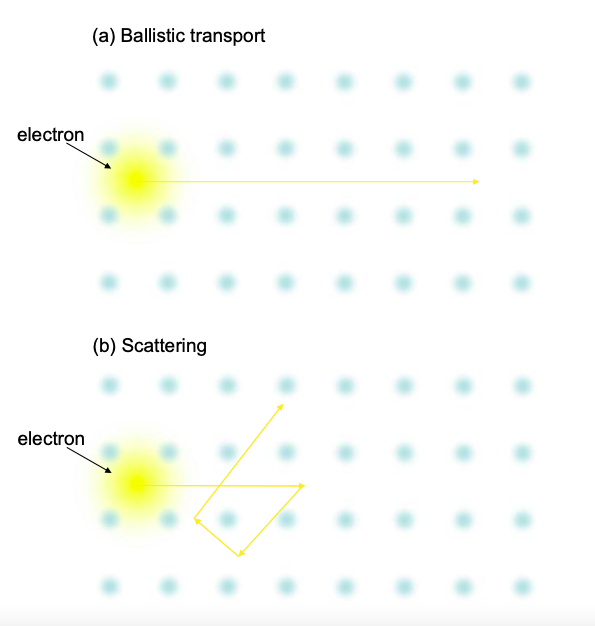4.2: Scattering and Ballistic Transport
- Page ID
- 50030
Next, let's assume that electrons travel in the wire without scattering, i.e. the electrons do not collide with anything in the wire that changes their energy or momentum. This is known as "ballistic" transport - the electron behaves like a projectile traveling through the conductor.
Electron scattering is usually caused by interactions between electrons and the nuclei. The probability of an electron collision is enhanced by defects and temperature (since the vibration of nuclei increases with temperature). Thus, the scattering rate can be decreased by lowering the temperature, and working with very pure materials. But all materials have some scattering probability. So, the smaller the conductor, the greater the probability that charge transport will be ballistic. Thus, ballistic transport is a nanoscale phenomenon and can be engineered in nanodevices.
For ballistic transport the electron has no interaction with the conductor. Thus, the electron is not necessarily in equilibrium with the conductor, i.e. the electron is not restricted to the lowest unoccupied energy states within the conductor.
But scattering can bump electrons from high energy states down to lower energies. There are two categories of scattering: elastic, where the scattering event may change the momentum of the electron but its energy remains constant; and inelastic, where the energy of the electron is not conserved. Equilibrium may be established by inelastic scattering.
Electron scattering is the mechanism underlying classical resistance. We will spend a lot more time on this topic later in this part.



